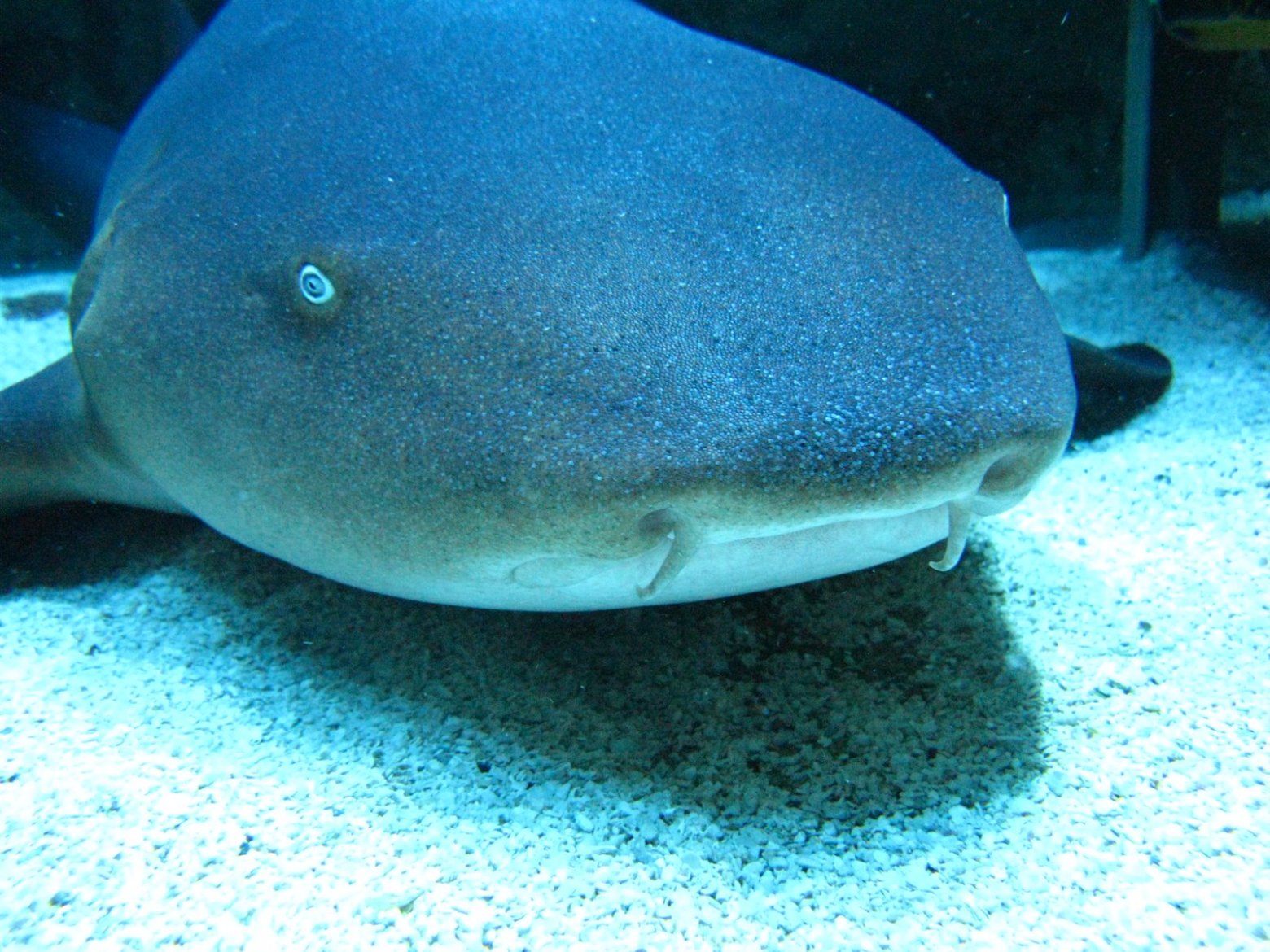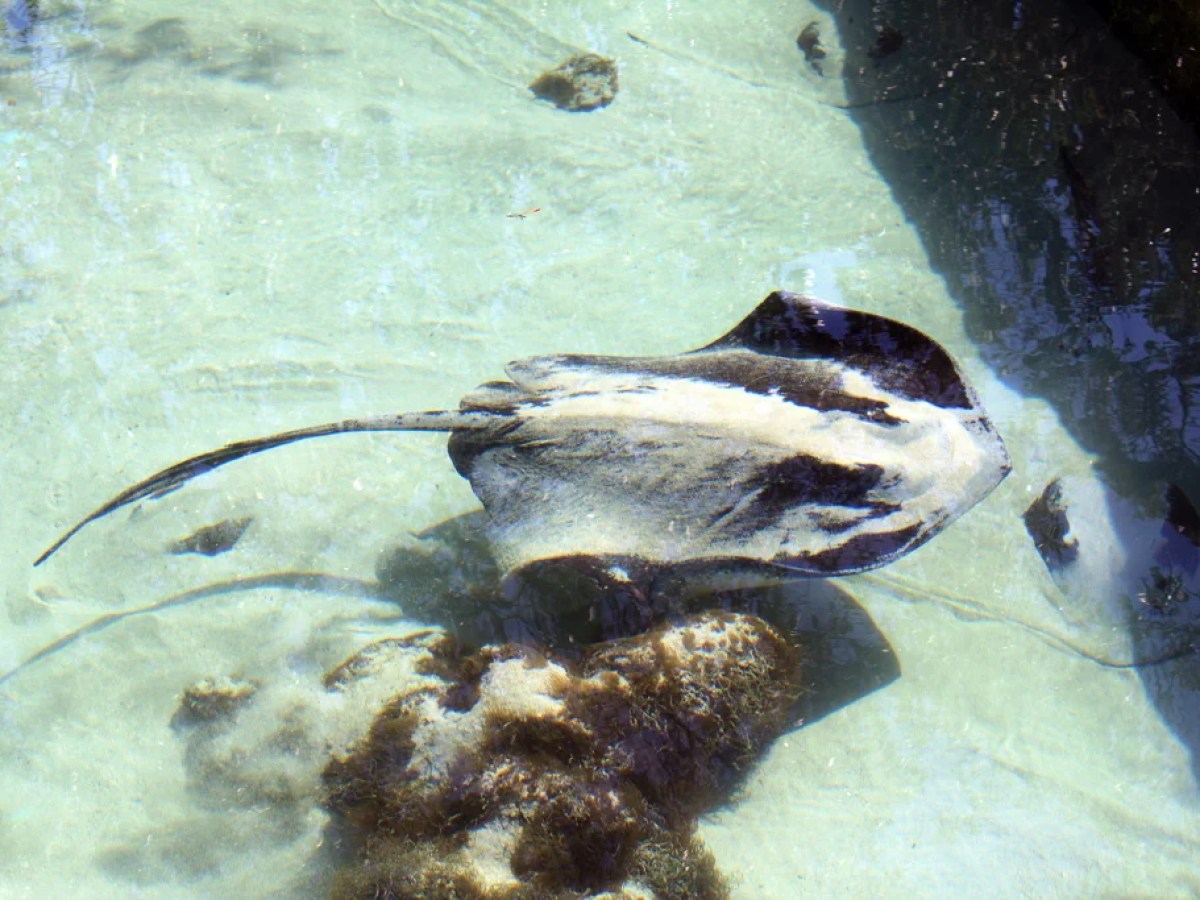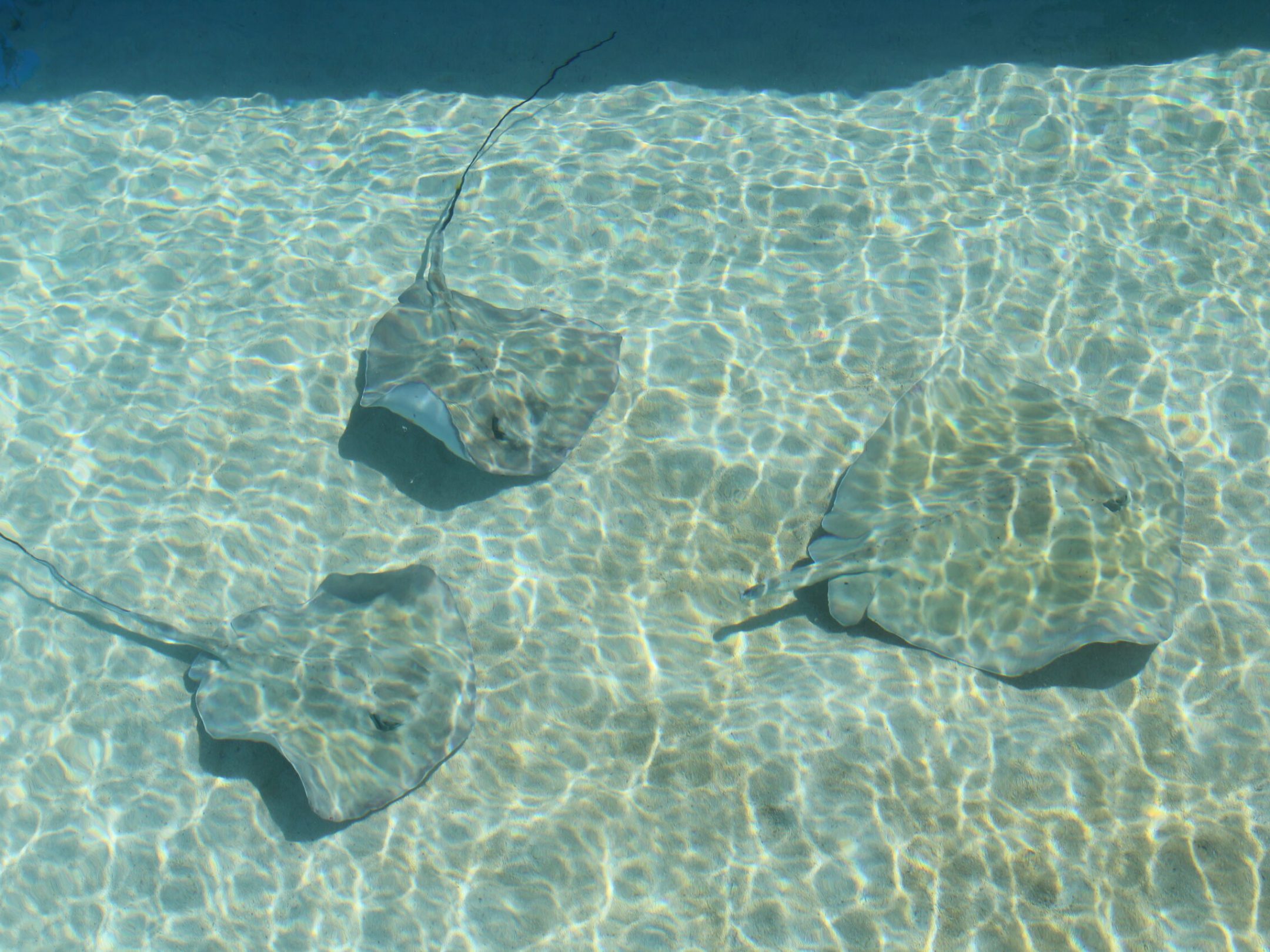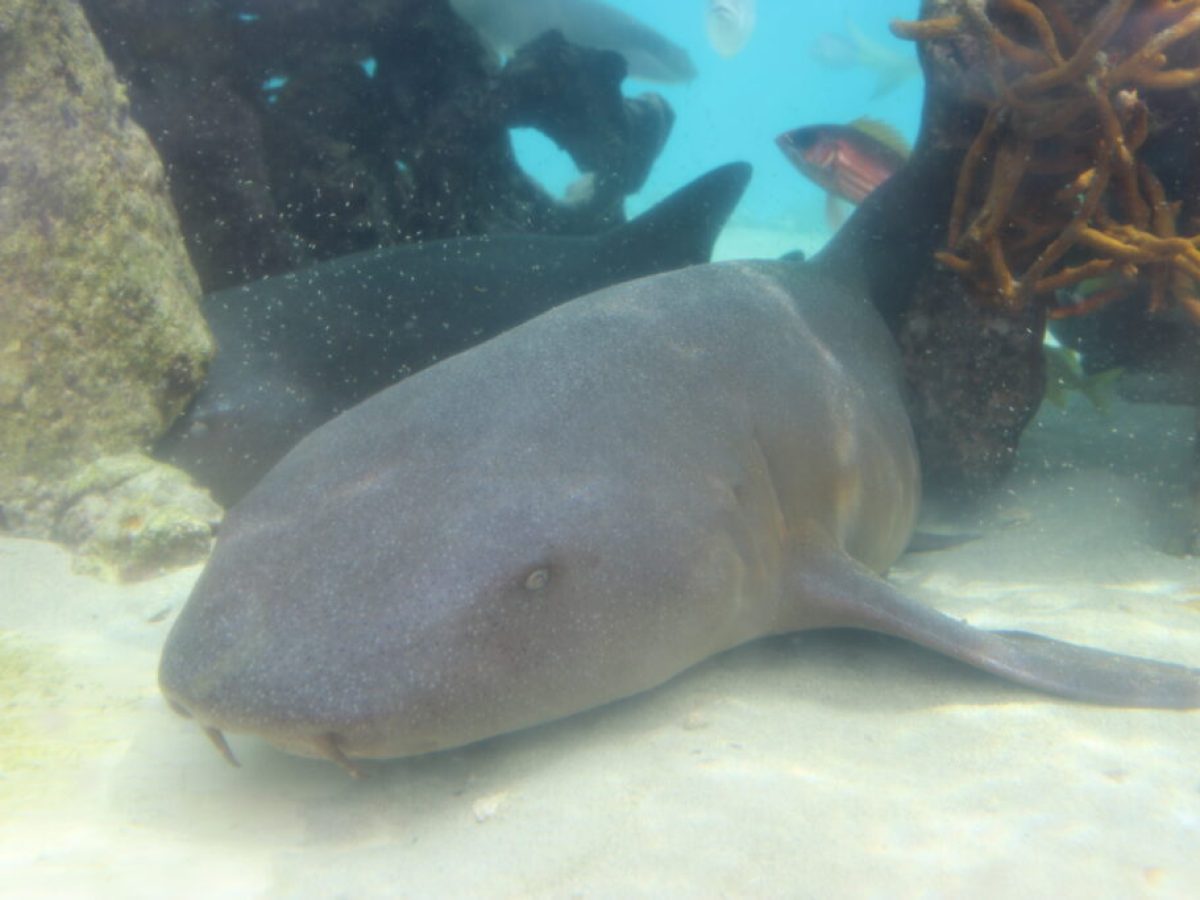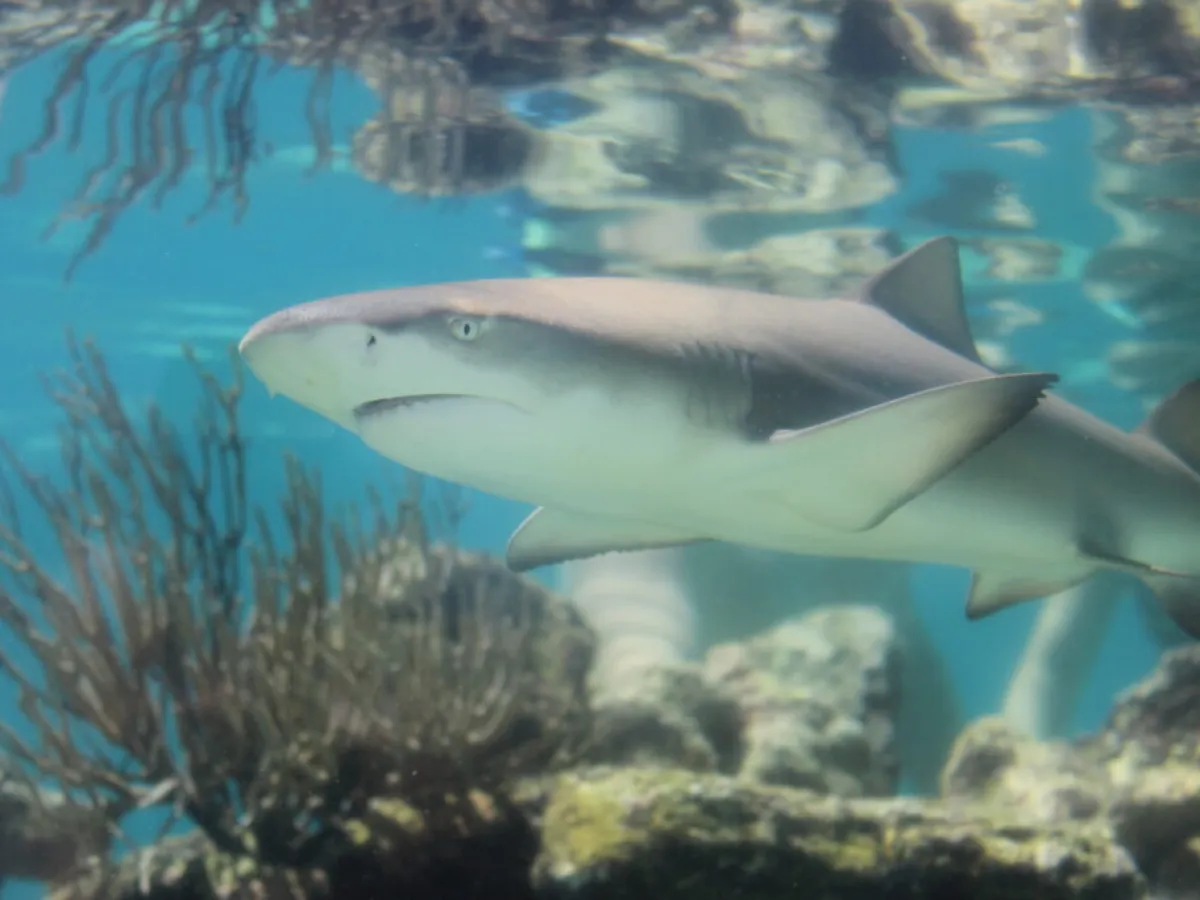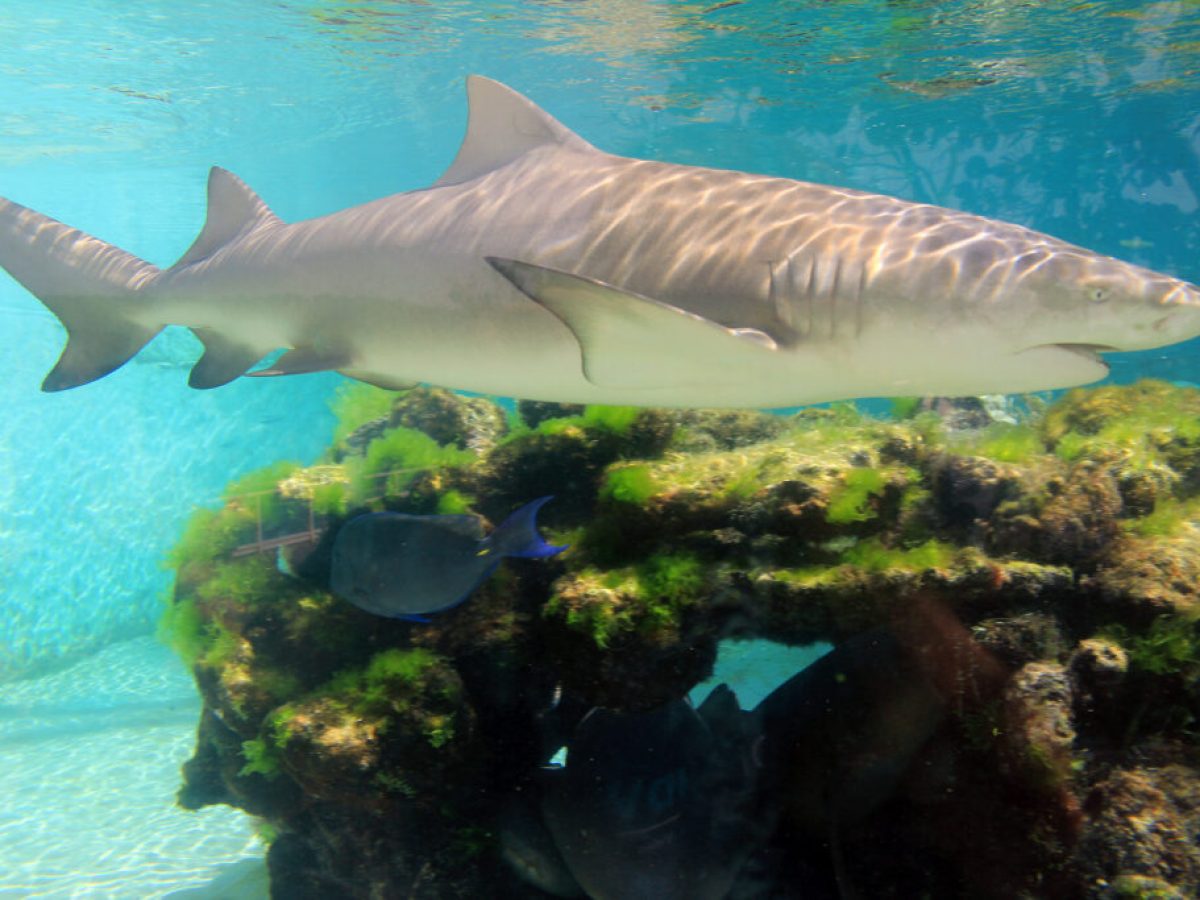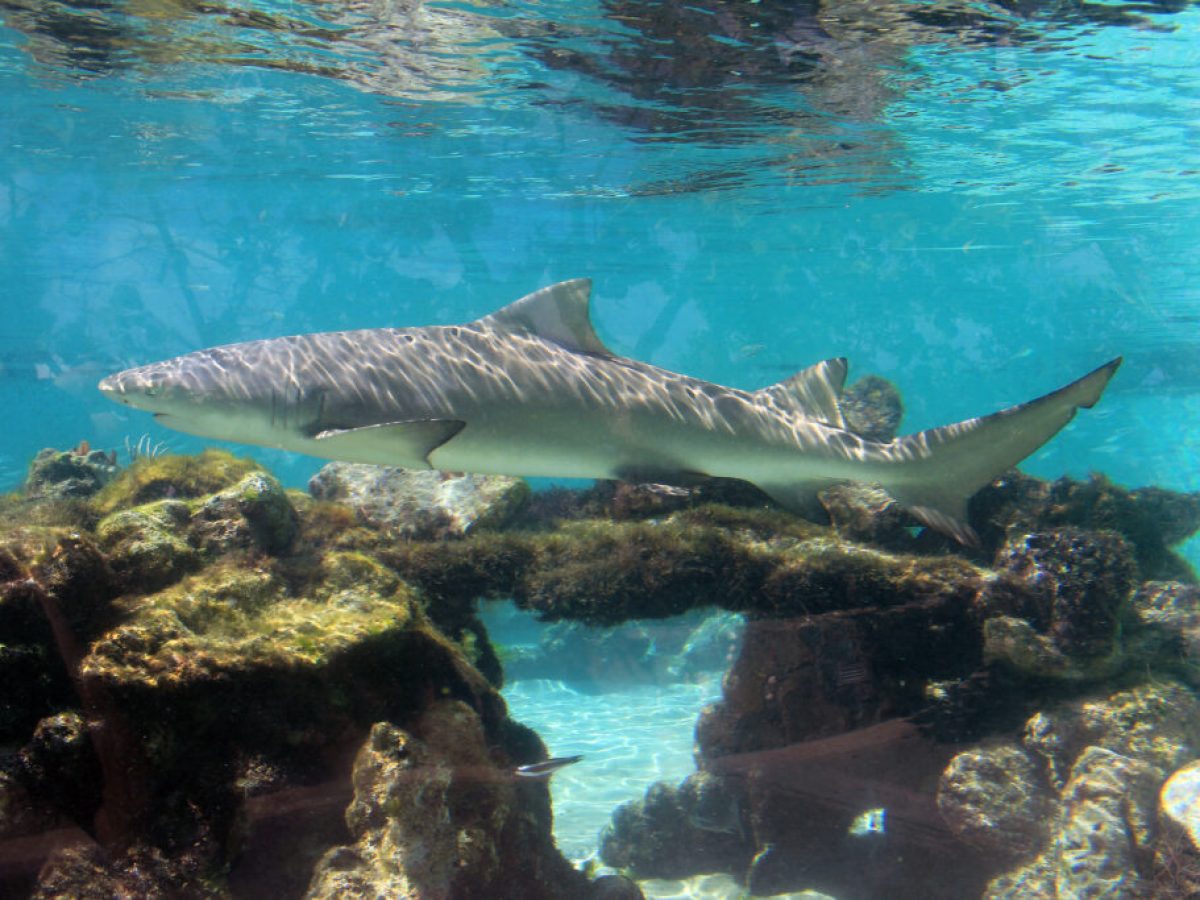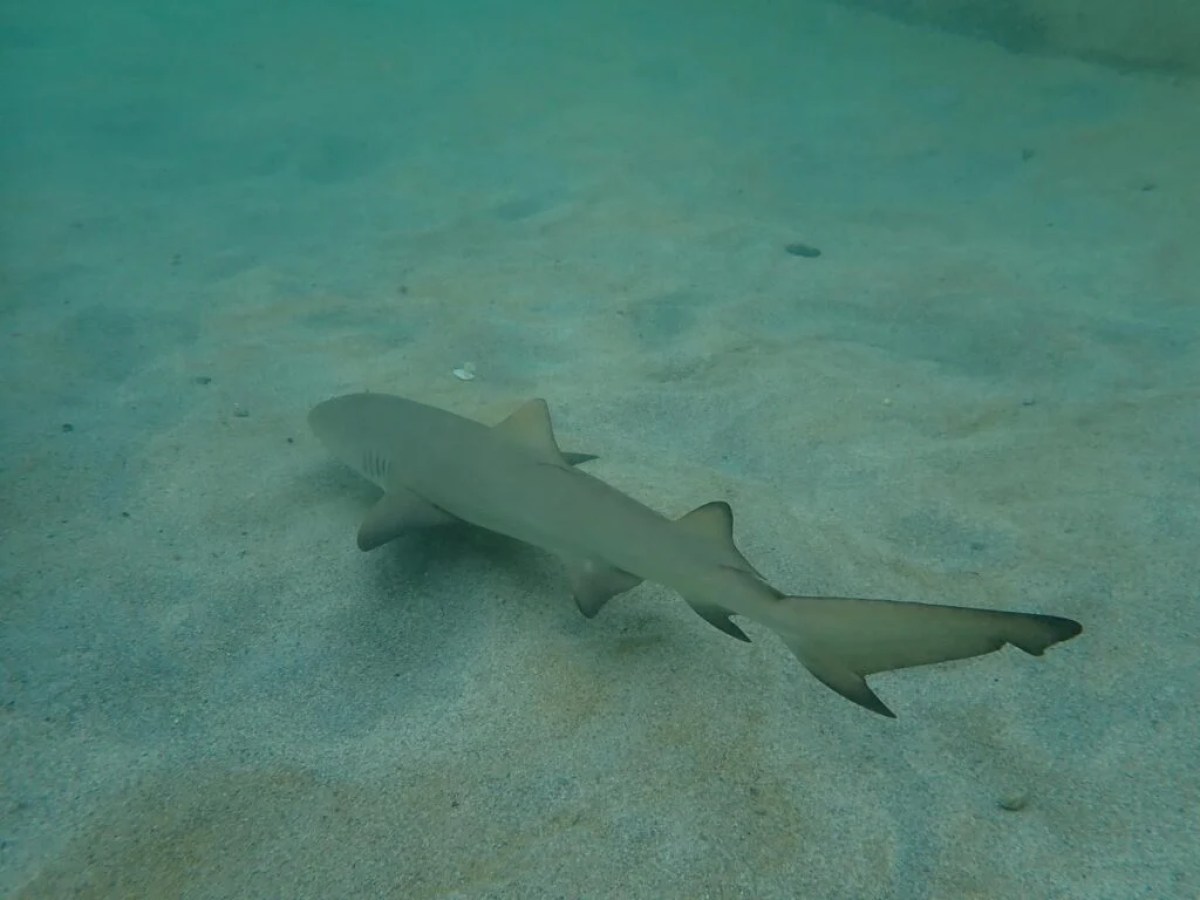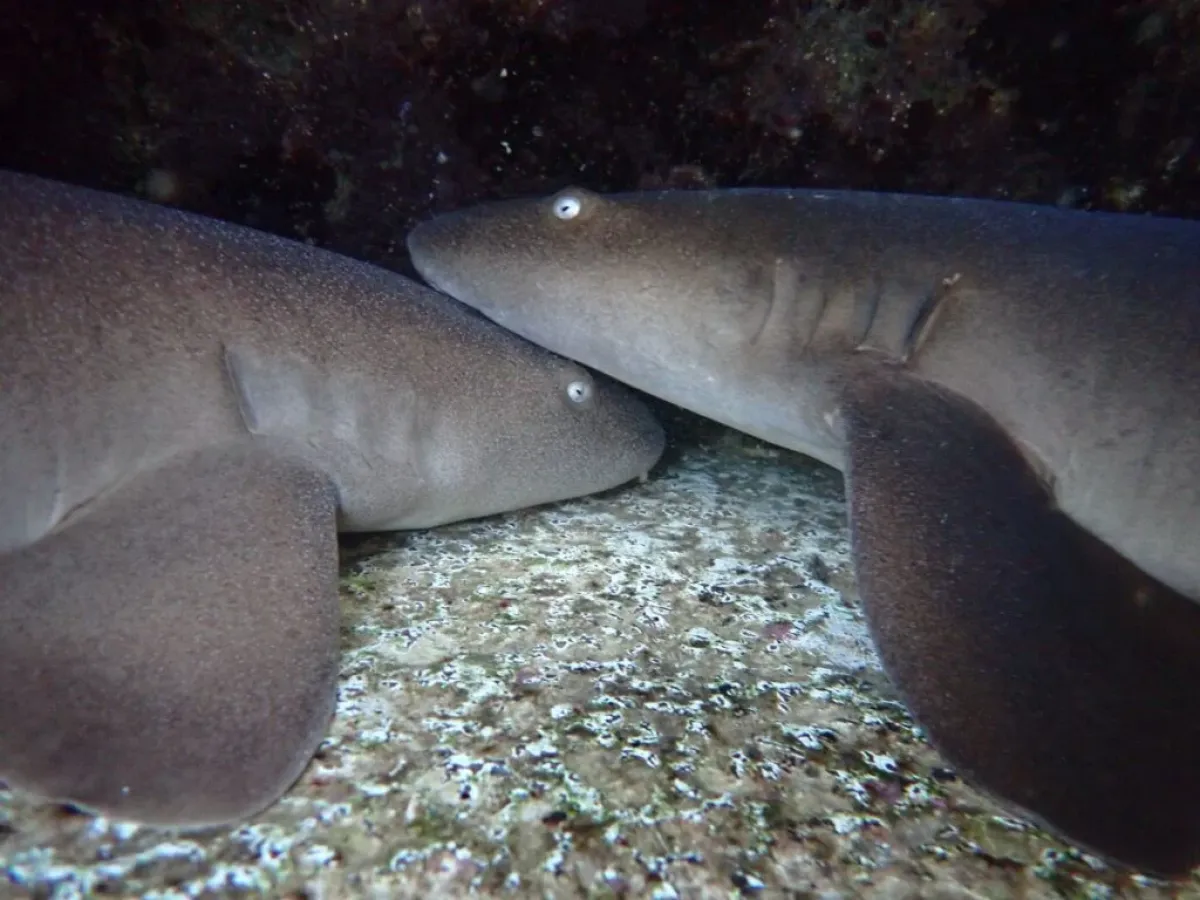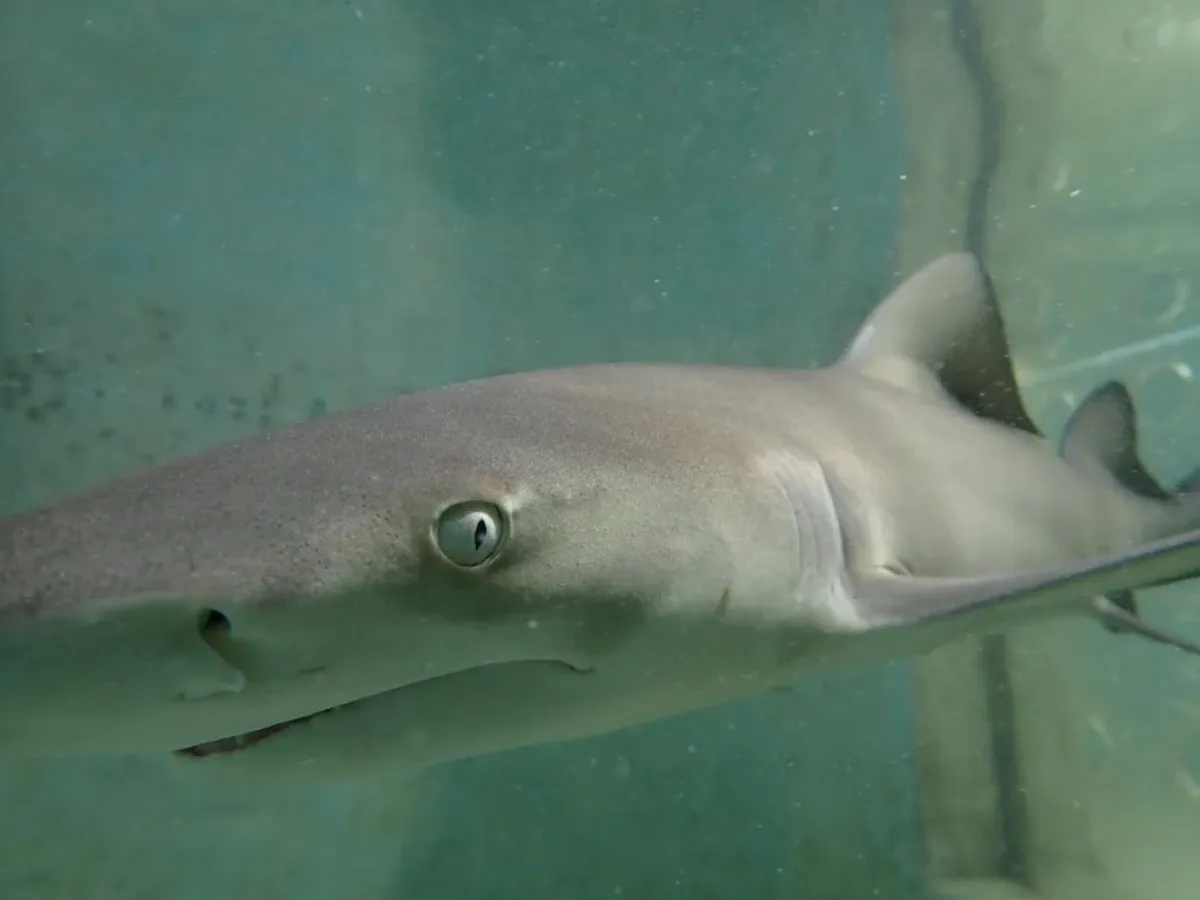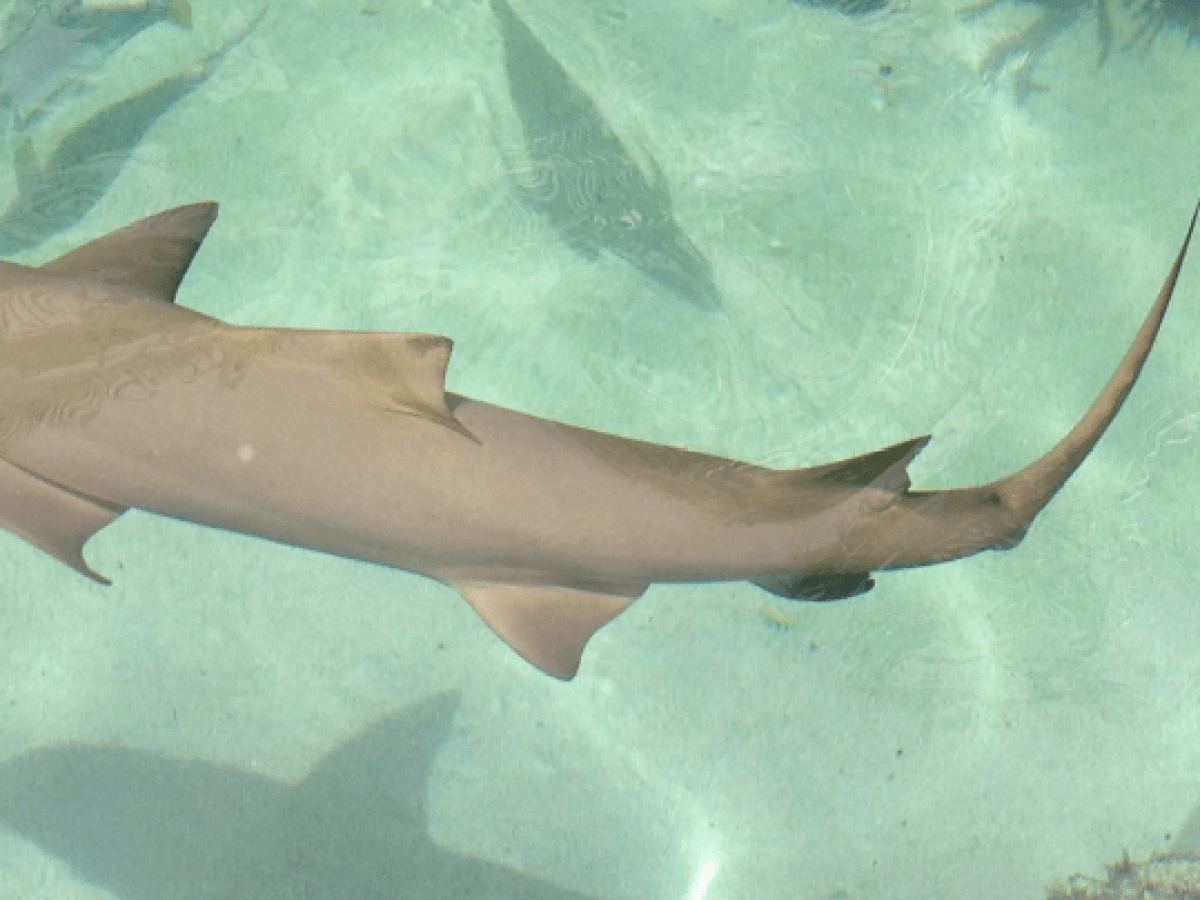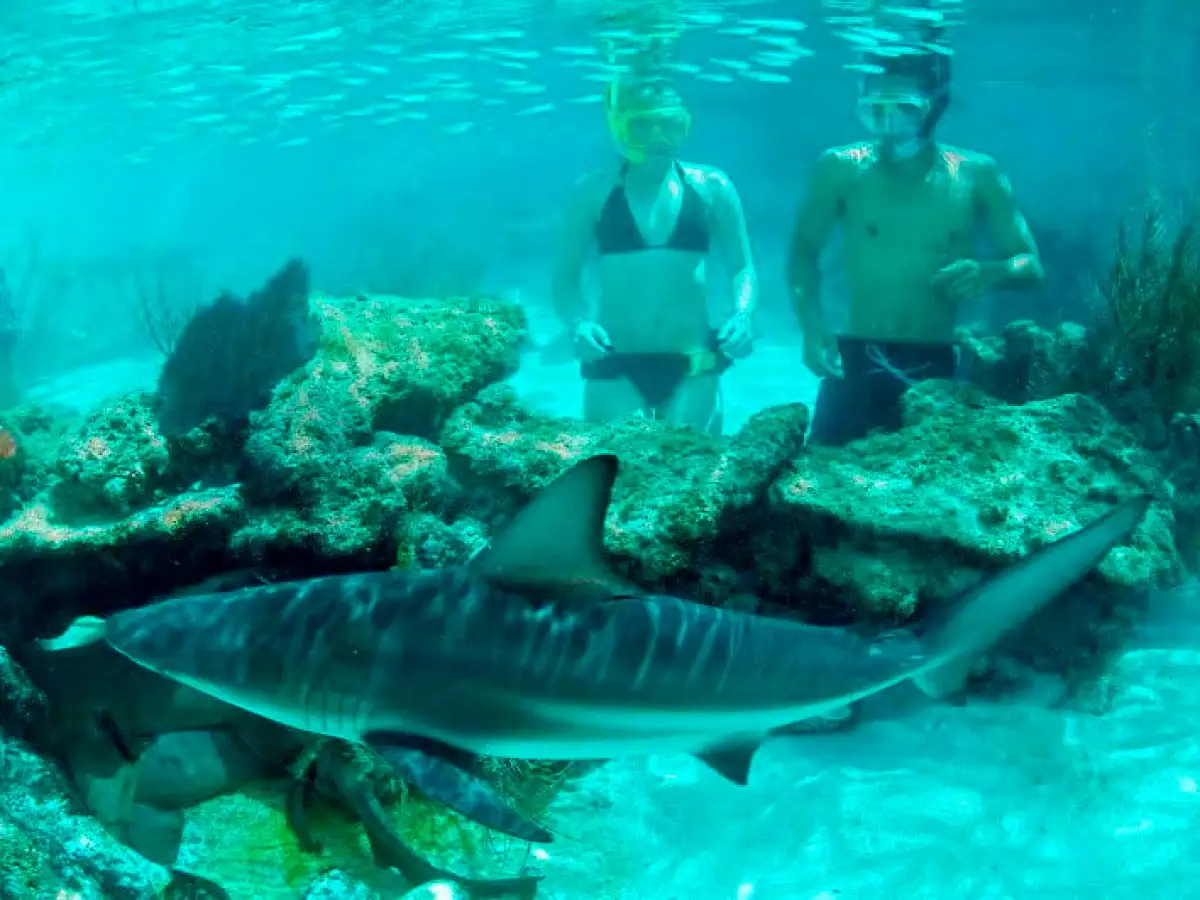Did you know that sharks and stingrays are related to one another? Sharks, rays and skates all belong to the same animal group called Elasmobranchii. Unlike bony fish, Elasmobranchs have a skeleton made out of cartilage and 5 to 7 pairs of gill slits that protect their gills from external stressors. In addition, Elasmobranchs differ from bony fish by having a stiff dorsal fin, lacking a swim bladder, having tooth-like scales that cover their bodies called dermal denticles and by reproducing through copulation. Elasmobranchs also have multiple rows of teeth that they shed and replace regularly.
There are approximately 600 species of rays and 375 species of sharks around the world, all of which are descended from a common ancestor that lived approximately 400 million years ago! There are nine shark species that inhabit waters surrounding the US Virgin Islands, some of which are commonly observed. These nine species include the Caribbean reef shark, the blacktip shark, the lemon shark, the Caribbean nurse shark, the Caribbean sharpnose shark, the tiger shark, the blacknose shark, the great hammerhead shark and the scalloped hammerhead shark (Rogers et al. 2008).
Shark & Ray Gallery

Lemon Shark
This species of shark is a close relative of the blacktip and Caribbean reef shark, belonging the the Carcharhinidae family. Lemon sharks inhabit coral reefs, mangrove lagoons, enclosed bays and river mouths in subtropical and tropical waters of the western Atlantic Ocean, ranging from New Jersey to southern Brazil. Lemon sharks are also found along the west coast of Africa, the southeastern Atlantic Ocean and the eastern Pacific Ocean from Baja California to Ecuador however, these populations may be different from those in the western Atlantic Ocean (Sundström 2015).
-
Lemon sharks are distinguished from other sharks by having a blunt snout that is shorter in length than the width of their mouth and a second dorsal fin that is almost as large as the first (Castro 2011). These sharks can attain lengths ranging from 8 to 10 feet long and may weigh as much as 551 pounds (www.floridamuseum.ufl.edu). As their name suggests, adult lemon sharks have a body that is dark brown, olive or a pale yellowish brown color from above and a yellow underside (Castro 2011; www.sharks.org). Lemon sharks also have a network of electroreceptors in their heads called the ampullae of Lorenzini that they use to detect weak electric fields from their prey and predators, and to navigate in turbid and dark waters (O’Connell et al. 2011). Adult lemon sharks are solitary animals that spend much of their daytime in offshore waters and that migrate to nearshore, shallow habitats at night (Castro 2011). Adult lemon sharks are considered to be opportunistic, nocturnal feeders, that prey upon locally abundant fish species and crustaceans as well as smaller sharks and rays (Castro 2011). During the daytime, these sharks are known to rest on the seafloor, an adaptation that may help them conserve energy (Castro 2011). Lemon sharks reach sexual maturity between 12-13 years of age and have a maximum life expectancy of 27 years (Sundström 2015; www.floridamuseum.ufl.edu). During the spring and summer months, lemon sharks form large aggregations in nursery grounds where mating takes place (Feldheim et al. 2002). Lemon sharks are viviparous animals that give birth to approximately 4-17 pups after a 12 month gestation period, every two years (Sundström 2015). Juveniles inhabit nursery grounds such as seagrass fields, lagoons, tidal creeks and mangrove lagoons where they form tight-knit groups that can last for 10 years (Castro 2011). Juveniles feed primarily on small or juvenile fish species such as snapper, porgies, halfbeaks, snake eels and grunts, and small crustaceans (Castro 2011). Although once abundant throughout their range, decades of overfishing have caused populations to decline in certain areas (Sundström 2015).
Caribbean Nurse Shark
Caribbean nurse sharks inhabit tropical and subtropical waters in the Western and Eastern Atlantic Ocean, ranging from North Carolina to southern Brazil in the western Atlantic and from tropical West Africa to the Cape Verde Islands in the eastern Atlantic Ocean (Castro 2000). On the west coast of the Americas, Caribbean nurse sharks can be found from the Gulf of California to Panama and Ecuador (Castro 2000). Caribbean nurse sharks are also extremely abundant and commonly observed in the Caribbean and southern Florida (Castro 2000). These coastal sharks primarily inhabit shallow, coastal environments such as patch reefs (Rosa et al. 2006b).
-
These sharks are active at night and as a result spend much of the daytime time resting beneath coral ledges, caves and crevices (Rosa et al. 2006b). Caribbean nurse sharks are distinguished from other shark species by having a broad, triangular shaped head, two spineless and rounded dorsal fins, two rounded pectoral fins and an elongated caudal fin. In addition, these sharks contain a pair of sensory appendages on their snouts called barbels that they use to locate prey. Caribbean nurse sharks vary in color, ranging from a yellowish-tan to a dark brown. Although rare, milk white specimens have been observed (Castro 2000). Unlike blacktip, Caribbean reef and lemon sharks, Caribbean nurse sharks have a simple tooth arrangement where adjacent teeth do not overlap. Caribbean nurse sharks are nocturnal predators that feed on squid, shrimps, crabs, spiny lobsters, sea urchins and small fishes. In the USVI and Puerto Rico, studies suggest that populations feed primarily on small fish species (Castro 2000). Caribbean nurse sharks have a large pharynx that enables them to suck up prey efficiently and that is strong enough to suck a conch out of its shell. Although many aspects of their life history are still unknown, a study conducted by Castro in 2000 found that Caribbean nurse sharks can attain lengths up to 265 cm long and can weigh as much as 106 kg (Castro 2000). Age of sexual maturity ranges from 10-20 years in females and 10-15 years in males and mating occurs during the summer months (Rosa et al. 2006b). Little is known about the gestation period for Caribbean nurse sharks, however a study conducted by Castro in 2000 found that the gestation period is 5-6 months long. These sharks are ovoviviparous animals that give birth to an average of 34 pups every two years (Castro 2000; Rosa et al. 2006b). Caribbean nurse sharks are threatened from overfishing and other human induced impacts such as pollution, run-off and deforestation that damage coral reefs (Rosa et al. 2006b).
Local Neighbor Species
Blacktip Shark
Blacktip sharks inhabit muddy bays, inland lagoons and coral reef ecosystems in tropical and subtropical waters around the world. In the United states, their range extends along the eastern coastline, from New England to the Florida Keys and the Gulf of Mexico (Castro 1996). Blacktip sharks are also common throughout the Caribbean region. These sharks have a spindle shaped body with a pointed snout, small eyes and elongated gill slits. The top part of their body ranges in color from brown to grey and their underside has a pale white coloration. These sharks do not have a pronounced ridge that runs between their two dorsal fins and are distinguished from other shark species by having dark markings on the edges of their dorsal, pectoral, pelvic and caudal fins.
-
Although blacktip sharks can attain lengths up to 9.2 feet, their average length is 4.9 feet. Black tip sharks are social animals that are found in groups of varying sizes. Groups are not differentiated by sex or age, however, non reproductive females and adult males do not school with pregnant females or juveniles. These timid sharks rarely ever display aggressive behaviors towards humans and have been known to interact with divers (Compagno 1984). One interesting fact about these animals is that they leap out of the water to remove parasites from their skin and to ambush their prey (Ebert 2003;Riner and Brijnnschweiler 2003 ). Blacktip sharks feed primarily on various species of fish including sardines, herring, anchovies, ladyfish, sea catfish, cornetfish, flatfish, threadfins, mullet, mackerel, jacks, groupers, snook, porgies, mojarra, emperors, grunts, butterfish, tilapia, triggerfish, boxfish and porcupine fish! Although 90% of their diet comes from these various fish species, blacktip sharks occasionally consume rays, skates, smaller shark species, crustaceans and cephalopods (Compagno 1984). Mating occurs during the spring and early summer and females gestate for approximately 10-12 months (Compagno 1984). Blacktip sharks are viviparous animals that give birth to four to seven pups each year in shallow nursery grounds(Compagno 1984). Due to predation and starvation, pup mortality is extremely high during the first 15 months of life, ranging from 61-91% (Heupel and Simpfendorfer 2002). Age of sexual maturity ranges from 4-5 years in males and 7-8 years in females. Since these sharks have low reproductive rates and are threatened by overfishing, they have been listed as near threatened by the International Union for Conservation of Nature (IUCN) (Burgess and Branstetter 2009).
Southern Stingrays
The rays we have on display here are all Southern Stingrays, the most common ray found in our area. They are typically found on sandy bottoms or in sea grass beds, and as adults can reach 5 feet across (females—5’; males–2’ across). Rays spend most of their time buried in the sand, with just their eyes and tail showing. This helps to camouflage them from predators, but also shades them from the sun. However, it does make it a little difficult for the rays to breathe, as their mouth is also buried in the sand. The answer to this challenge is a small hole behind each eye—this is called the spiracle and allows the ray to draw water in over its gills so it doesn’t get a mouthful of sand.
-
Rays are closely related to sharks, and both have a soft flexible skeleton made of cartilage. Feeding Unlike sharks, rays don’t have sharp teeth. Instead, they have smooth rows of tooth plates that they use to crush or grind their prey. Like sharks, rays replace their teeth regularly. Their teeth do get worn down from crushing, as their favorite foods include snails, clams, shrimp, and worms, and sometimes-small fish. Sharks and stingrays both have an excellent sense of smell, which helps the rays find food hidden under the sand. Sharks and rays also share a very unusual sense for finding food—these animals can detect the electric field produced by all living animals. Just as a doctor can detect the electric current our heartbeat produces with an electrocardiogram, or EKG, the rays can detect the heartbeat or muscle contractions of animals buried in the sand. Defense The most notable feature of the stingray is the sharp venomous barb or stinger. The barb is found on the top of the tail, not too far from where the tail joins the body. This weapon is used ONLY for defense—rays are typically very gentle animals and avoid danger whenever possible. The only real predators of rays are humans, which sometimes kill them out of fear, and large sharks. Hammerheads have been seen using their broad head to pin rays down to the sand, and take bites out of them—and many hammerheads have been seen with a face-full of stingray spines from past encounters. In order for the ray to be able to swing the tail effectively, it has to be pinned down—this sometimes happens if a person steps on one by mistake. Again, the ray’s first reaction is to swim away. It is painful for the rays to lose the barb, as it is ripped out of their own skin, and it takes several weeks to replace their defensive weapons. The barb looks dark on the live ray because it is covered with skin, which is full of venom glands. The venom is extremely painful, but not fatal to humans. The edges of the barb are serrated so that when the barb is inserted it does not pull out easily. The best way to avoid being injured is to shuffle your feet slightly when walking in shallow water. Swimming The last thing I want to point out before we feed the rays is that while the tail is a great place to hold the barb, it is also very important for swimming. The long tail helps to stabilize the ray during swimming, much like we put a tail on a kite to keep it from wobbling up in the air.
Have a Close-Up Encounter with Sharks & Rays
Learn from Our Shark & Ray Experts
Shark Talk
- 9:30AM – 9:40AM
- 7 days a week
- Shark Shallows
-
The inhabitants of the Shark Shallows may include nurse, lemon, and blacktip sharks. During the talk you will have the opportunity to learn about these amazing and very misunderstood animals. Coral World collects the sharks in its exhibits from local waters and Shark Shallows serves as a head start program for sharks – When the juvenile sharks reach a certain size and are less likely to be prey for larger predators, our marine operations staff tags and releases them to the sea.
Shark Feeding
- 1:00PM – 1:10PM
- 7 days a week
- Shark Shallows
-
The inhabitants of the Shark Shallows may include nurse, lemon, and blacktip sharks. During the feeding you will have the opportunity to learn about these amazing and very misunderstood animals. Coral World collects the sharks in its exhibits from local waters and Shark Shallows serves as a head start program for sharks – When the juvenile sharks reach a certain size and are less likely to be prey for larger predators, our marine operations staff tags and releases them to the sea.
Caribbean Reef Encounter Feeding & Presentation
- 11:30AM – 11:40AM and 3:00PM – 3:10PM
- 7 days a week
- Caribbean Reef Encounter Exhibit
-
Get a 360-degree view and learn about some of the various species of fishes, corals, stingrays, sharks, and invertebrates that live in our surrounding waters. Learn about the importance of a balanced eco-system and how Coral World’s Caribbean Reef Encounter meets the needs of this diverse collection from training, to feeding, and so much more. Learn about the important goods and services that coral reefs provide, the threats they are facing and how you can help protect them!



